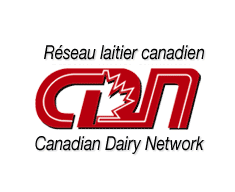It seems that Canada’s genetic evaluation release in April of each year always comes with a series of important changes, and April 2021 will be no different. In addition to the usual update of the genetic base used for each trait in each breed, as well as the annual update of the Pro$ formula, let’s take a brief look at three areas where Lactanet Canada will be introducing new and/or improved services starting the April 2021 genetic evaluation release.
 First Official Evaluations for Feed Efficiency
First Official Evaluations for Feed Efficiency
It is well known and understood that feed costs represent a major expense on any dairy farm. It’s also clear that some animals are more efficient in converting the feed they consume into milk production, which is the primary source of income for dairy producers. Lactanet Canada will make history in April 2021 by publishing the first official Feed Efficiency genetic evaluations for the Holstein breed in Canada. This new trait of major importance is the result of a comprehensive 5-year international research project led by Canadian scientists at the University of Guelph and University of Alberta. The Canadian Feed Efficiency evaluations will include data from 14 different herds, including three in Canada and eight in the United States, that collected daily dry matter intake along with production yields and body weight for cows in first lactation. The collaborative effort between university researchers and Lactanet geneticists has resulted in the development of a state-of-the-art genetic and genomic evaluation system using the globally recognized Single Step methodology. Feed Efficiency will be added as a key trait among the list of functional traits offered for all sires in A.I. With the April 2021 release, only DHI customers of Lactanet will be receiving Feed Efficiency evaluations for females in their herd inventory and a fee-for-service model will be implemented later in the year for providing other Canadian producers access to Feed Efficiency evaluations for their Holstein heifers and cows.
Composite Indexes Applied to Major Type Traits
Following an extensive period of consultation, analysis and communication, April 2021 will see Lactanet changing the genetic evaluations for Conformation, Mammary System, Feet & Legs, Dairy Strength and Rump to composite indexes for the Holstein, Ayrshire and Jersey breeds. This approach ensures a consistent definition of these traits across all animals within each breed since the published evaluations will be based on a specific formula that combines the evaluations for the various descriptive linear traits within the respective scorecard section. In addition, the use of composite indexes will allow for adjustments in the formula to help control unexpected selection responses. Three examples include (a) ensuring that composites for Mammary System, Feet & Legs and Rump are independent of Stature, (b) ensuring that the Mammary System composite does not lead to shorter teat length, and (c) ensuring that the Feet & Legs composite does not lead to an increased frequency of straight rear legs.
New Genetic Recessive Trait in Jerseys
A new undesirable genetic trait, known as Jersey Neuropathy with Splayed Forelimbs (JNS), was recently identified in the Jersey breed. JNS is a recessive genetic anomaly and when inherited from both parents results in a calf that is born alive and appears healthy but they cannot stand. Affected calves exhibit neurologic symptoms with muscle stiffness in the head and neck and they also have front legs that are rigid and spread out in front of their body. Based on genotyped Jerseys in North America, it is estimated that 6% of the population are carriers of this undesirable recessive characteristic. At the present time, no gene test is available to identify carriers with complete certainty but a very high level of accuracy can be achieved by the analysis of haplotypes for genotyped Jerseys. The Council on Dairy Cattle Breeding (CDCB) in United States has expanded its current analysis of haplotypes to include JNS and results will be shared with Lactanet Canada for all genotyped Jerseys of interest. Based on those results, carrier probabilities for the JNS haplotype will be published on the Lactanet Genetics web site in conjunction with the April 2021 genetic evaluation release. For each Jersey animal, the JNS carrier probability will be displayed on its Pedigree page and the Advanced Group Query tool will also allow users to easily identify and filter Jersey sires that are deemed to be either Carrier or Free based the haplotype analysis. Ultimately, by knowing which Jerseys are carriers, or likely to be one based on their pedigree, Canadian Jersey breeders can avoid mating carriers together and minimize the potential impact of JNS calf losses in their herd.
Summary
The field of genetics is constantly changing and improving. Lactanet is committed to remain a global leader of quality and relevant services in the area of dairy cattle genetics. The genetic evaluation release in April 2021 will include various updates and improvements to help Canadian dairy producers make the best genetic selection and mating decisions possible for the profitability of their herd.
Author: Brian Van Doormaal, Chief Services Officer, Lactanet




